Shardlow Part 05 - The Wharf
w/e 31 January 2016
All of this week's pictures were
taken with a Kodak DX6490

Our meanderings around Shardlow so far have taken
us along the Trent and Mersey Canal to the River Trent and also
along London Road to Cavendish Bridge over the river. We began
our wanderings by walking the towpath by the canal between London
Road and Wilne Lane returning via the lane. Now in this fifth
part we return to Wilne Lane to follow another route back to
London Road to the west of the canal. We follow The Wharf before
crossing London Road and into Canal Bank which is on the eastern
side of the canal.
There are over fifty Listed Buildings in Shardlow with about
a dozen and half clustered around this part of the canal many
of which date from the period when Shardlow was an important
inland port. We have already seen a few of them from the canal
towpath but this route enables us to see more, all of which are
Grade II Listed.
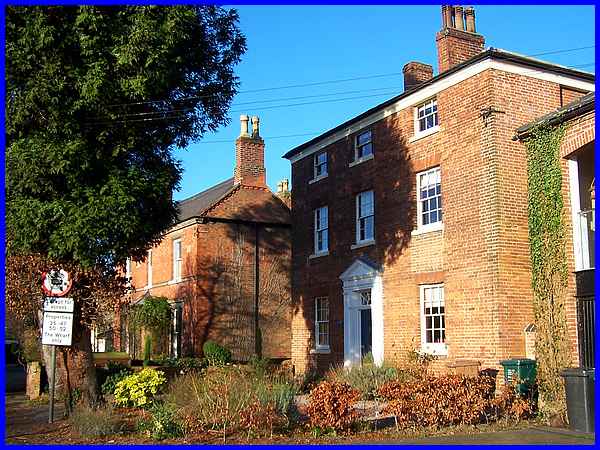
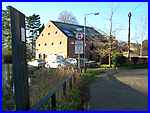 Leaving Wilne
Lane, The Wharf passes both the New Inn and The Malt Shovel to
reach number 47 (above). This was built in the late eighteenth
century for a merchant called Humphrey Moore and it looks across Leaving Wilne
Lane, The Wharf passes both the New Inn and The Malt Shovel to
reach number 47 (above). This was built in the late eighteenth
century for a merchant called Humphrey Moore and it looks across
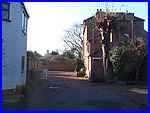 the road to the
canal and another listed warehouse (left) that we saw from the
towpath in Part 01. Formerly a warehouse it also incorporated
a boat building yard and has a special inlet off the canal for
unloading boats. the road to the
canal and another listed warehouse (left) that we saw from the
towpath in Part 01. Formerly a warehouse it also incorporated
a boat building yard and has a special inlet off the canal for
unloading boats.
We continued along The Wharf to what appears to be the end of
the road (right) but there is a jitty on the right that leads
through to the continuation and remainder of The Wharf.
|
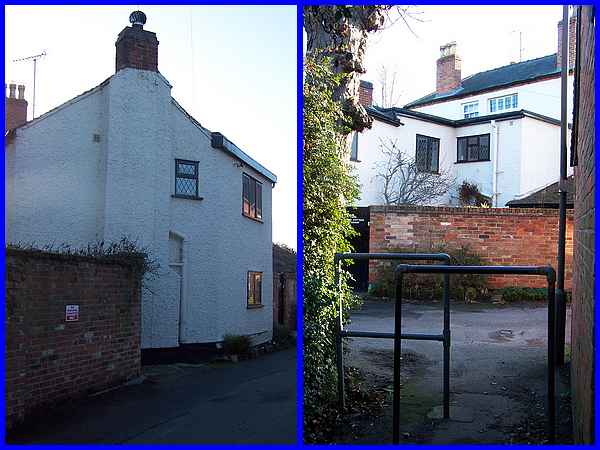
The large white house on the left at the end of the road is The
Firs, seen here from the road and also from the jitty. It has
its origins in the early nineteenth century and has later alterations
and additions.
|
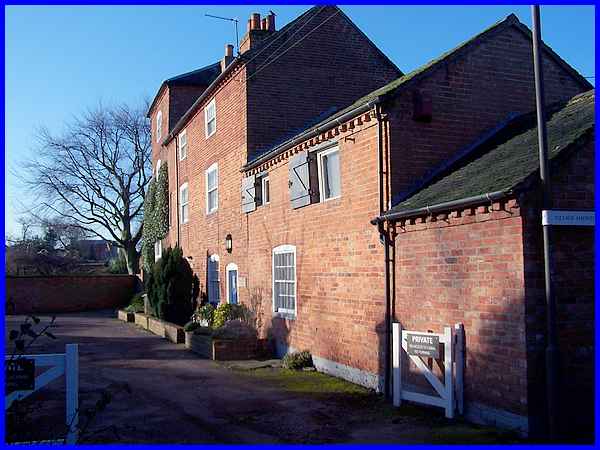
A private road extends the road from the jitty to a group of
properties that are all Grade II Listed. These include the ivy
covered and appropriately called Ivy House at the far end and
numbers 44, 44a and 46 The Wharf all of which date from the early
nineteenth century. We turned right here to walk through the
jitty.
|
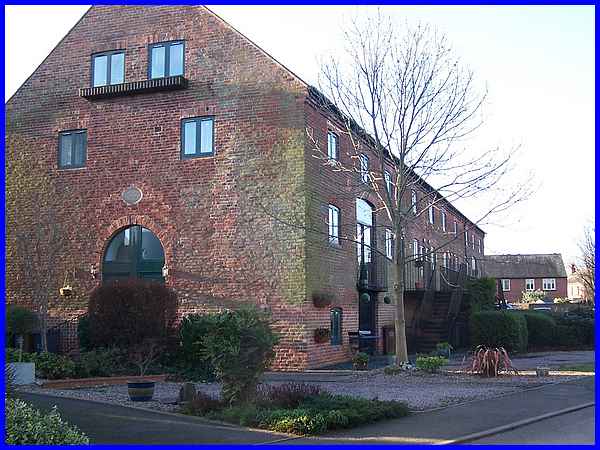
After walking through the jitty, there is a large building on
the left hand side which was the Number 3 Mill. This was a canal
warehouse built in 1792 which has been extensively modernised.
In fact the details in the listing on the Historic England website
say that the twentieth century additions are "of no interest"
but adds "One of the earliest in a series of industrial
buildings erected after the completion of the Trent and Mersey
Canal, when Shardlow was a thriving inland port."
|
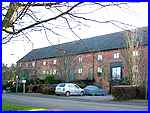 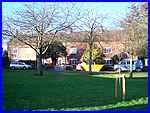 Left is another
view of the Number 3 Mill and right a view through the trees
across an open grassed area to a terrace on the other side of
the green. Although still on the Wharf this area is also known
as Mill Green. The late eighteenth century terrace of four properties
are numbered 9 to 17 The Wharf (No. 13 is missing) and these
too like all the others are Grade II listed. Left is another
view of the Number 3 Mill and right a view through the trees
across an open grassed area to a terrace on the other side of
the green. Although still on the Wharf this area is also known
as Mill Green. The late eighteenth century terrace of four properties
are numbered 9 to 17 The Wharf (No. 13 is missing) and these
too like all the others are Grade II listed.
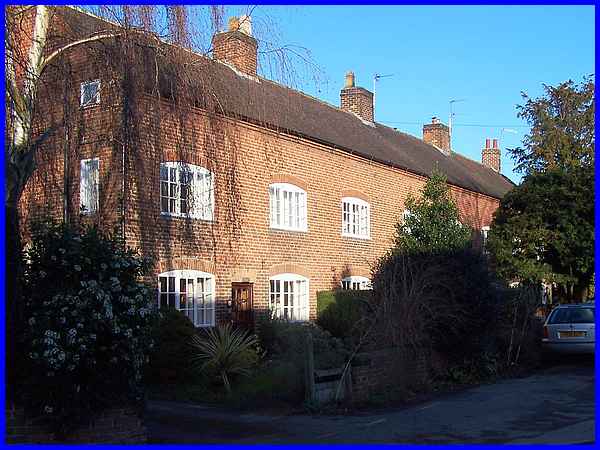
It is thought that the terrace was probably built to house workers
on the canal.
|
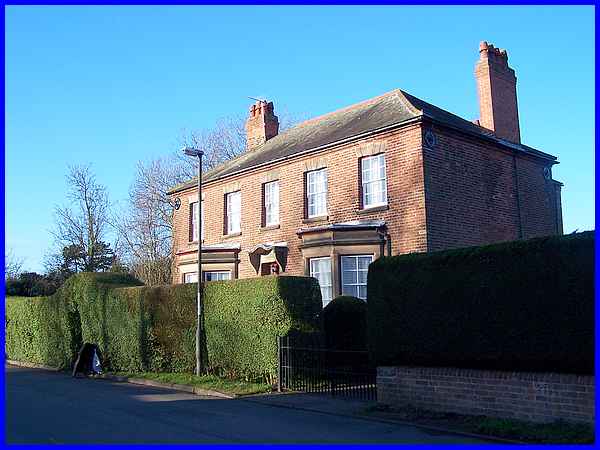
The only other property on the same side of the road between
the terrace and London Road is number 7, The Wharf. This grand
house was built in 1794 and the date is inscribed on the lintel
over the door. The house is thought to originally have been built
as offices for the canal basin.
|
Opposite number 7 is the vehicular and pedestrian
entrance to the former warehouses that we saw when we walked
along the canal towpath in Part 01. These too are listed but
the terrace between the entrance and The Wharf's junction with
London Road are not. Almost directly opposite the road junction
is an old salt warehouse but there is a better view of that from
Canal Bank. So we turned left from The Wharf crossing London
Road and the canal to reach Canal Bank on the eastern side of
the canal.
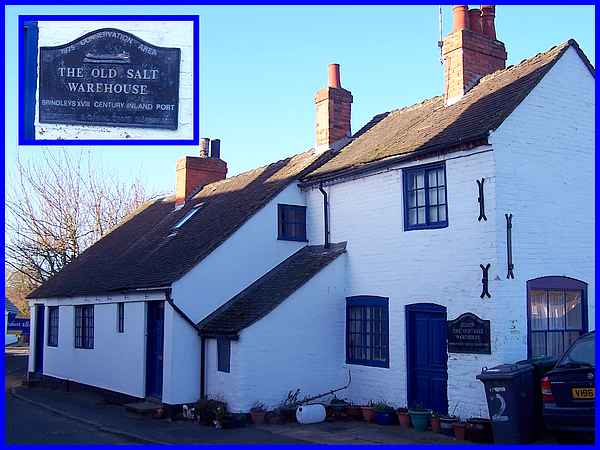
There are three listings for buildings at the junction of London
Road and Canal Bank. One concerns numbers 2 and 4 on the right
hand side that back onto the canal. These two cottages were originally
three and were built in the early nineteenth century. Rather
confusingly, a plaque by the door is inscribed "The Old
Salt Warehouse" but this building is not the salt warehouse
referred to opposite The Wharf.
|
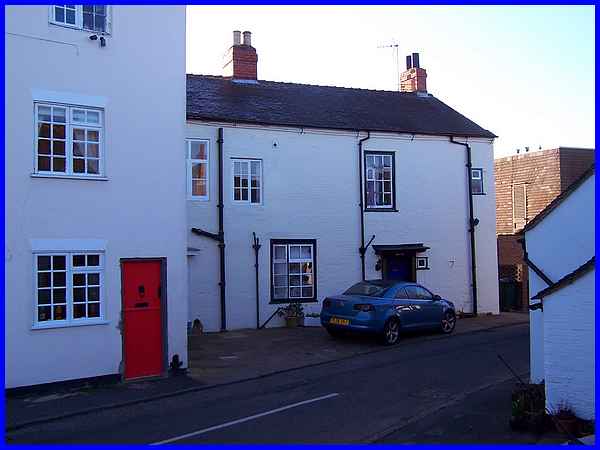
On the left hand corner of Canal Bank, three properties warrant
two entries in the Listed Buildings archive. Numbers 5 and 7
are recorded as early nineteenth century two storey cottages
in one entry whilst number 1 has its own entry from the same
date but is detailed as a three storey house rather than a cottage.
|
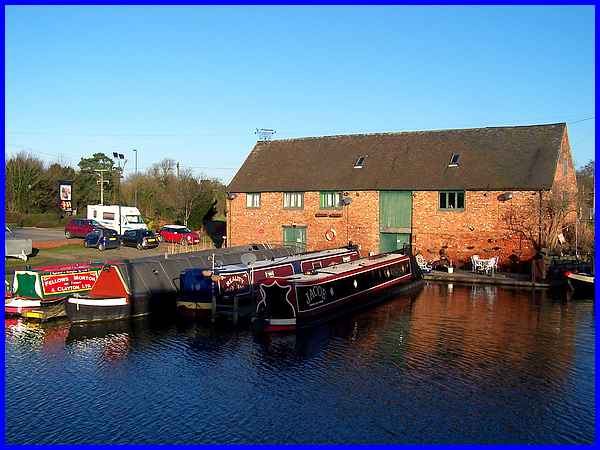
Now walking a little way down Canal Bank and turning to look
back over the canal towards London Road, we get that better view
of the "Old Salt Warehouse to the North East of Trent Mill
Number 2". Of late eighteenth century construction this
is another of the earliest industrial buildings erected after
the completion of the Trent and Mersey Canal and today it house
the Shardlow Heritage Centre.
|
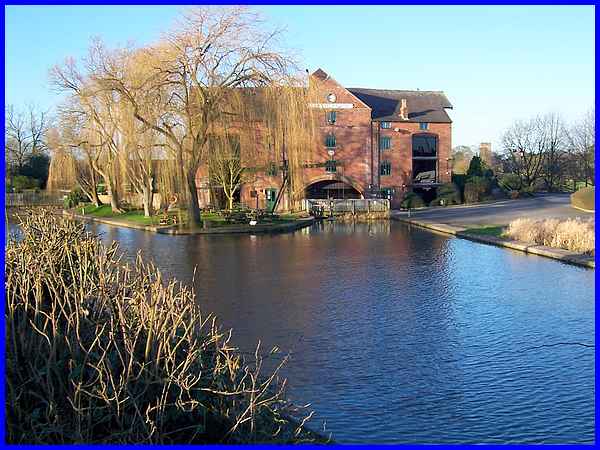
To the left from approximately the same position at the side
of the canal is the large building often known as the Clock Warehouse
due to the clock face set in a circular stone surround but listed
as Trent Corn Mills. It was built as a corn warehouse in 1780
and was converted about 1970 to become what we see today as a
public house that caters for functions and private parties. Being
of 1780 construction it again contains the words "One of
the earliest in a series of canal warehouses" in its official
listing. It is notable in a historic sense in that it had its
own inlet from the canal which allowed narrow boats into the
building for loading purposes.
This is a fitting place to end our look
at Shardlow around the Trent and Mersey Canal but all five parts
in this series have been at the eastern end of the village. In
the next part we will head along London Road to start our exploration
of the rest of Shardlow.
|

